(Jerome Kern & Oscar Hammerstein II)
Peggy Lee
Analysed by Robert Walton
Whenever I’m asked to name one of my favourite songs in that largely neglected period, the Golden Era of Popular Music between 1920 - 1960, without hesitation my reply is always The Folks Who Live on the Hill sung by Peggy Lee. But as you’ll find out there’s a heck of a lot more packed into just one short track. For some reason the location in my imagination has always been the Tauranga region of New Zealand’s Bay of Plenty - a truly rural spot a few miles inland from the mighty Pacific Ocean. What a setting and what a singer! So much so, I simply can’t wait to proceed with my analysis. Before that though I must tell you the song was composed in 1937 and first sung in the film “High, Wide and Handsome” by Irene Dunne. Twenty years later in 1957, Capitol Records revived it for surely what must be the definitive version, which is not surprising with all the talent involved.
This Mahler-inspired hymn-like miniature miracle begins with strings and harp creeping in to create one of the most beautiful feelgood atmospheres ever heard. The whole thing is cradled by Nelson Riddle’s brilliant score. And as if that isn’t enough, a solo trumpet pops up proclaiming something of great importance is about to be announced. Then a haunting oboe continues this short introduction via more trumpet with an added horn bringing the section to a close. (It reminds one of Western movie music).
Husky-voiced Peggy Lee now delivers Hammerstein’s glorious lyric making a very ordinary scenario quite special, with Kern’s equally gorgeous melody. Plan A, building a home on a hill has overtones of the TV series “Grand Designs”. The 43 bar tune including a bridge of 6 bars might be unusual but the overwhelming message is one of complete normality. Peggy sings about two people falling in love, bringing up kids and refers to many things families experience during one’s life. Every time she mentions the title, that trumpet joins her and goose pimples magically appear. And she insists on being called “folks”. No problem. We will oblige. It’s more like a prayer of thanks and hope for the future.
Oh yes, I almost forgot one small detail. Frank Sinatra waved the baton over the whole affair! At this difficult time of Covid and Climate Change, it was like a breath of fresh air!
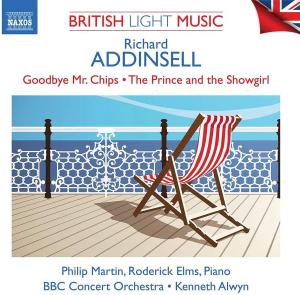 CD Review – Love Songs
CD Review – Love Songs
Angela Hewitt piano
Hyperion CDA68341 [75’57]
We are constantly being encouraged to meditate during – and beyond – these still uncertain times. Researched, put together and recorded during lockdown, this album with its musical declarations of love across the centuries would be an ideal accompaniment to any such activity.
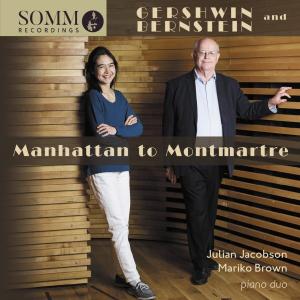 CD Review – Manhattan to Montmartre
CD Review – Manhattan to Montmartre
Gershwin and Bernstein
Julian Jacobson, Mariko Brown piano duo
Somm SOMMCD 0635 [72:30]
Recorded in August 2020, this is another non-orchestral release possibly brought about by the Covid lockdown – and another successful foray into our kind of music for the enterprising award-winning Somm label.
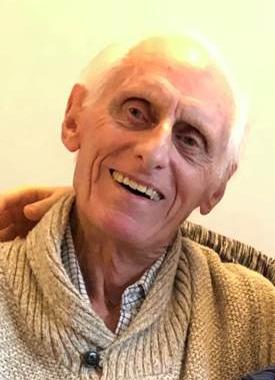 It is with profound sadness that we record the death of Vernon Anderson, who peacefully passed away on June 15th, after a period of ill health borne with great courage and dignity.
It is with profound sadness that we record the death of Vernon Anderson, who peacefully passed away on June 15th, after a period of ill health borne with great courage and dignity.
A native of Benfleet, Essex, Vernon was educated at Bearwood Royal Navy School in Berkshire and saw military service with the RAF, being stationed in the (then) British colony of Aden (now Yemen). Returning to Benfleet, he became a member of the Barking Choral Society, where he met his future wife Beryl and they married in 1971. Sadly, Beryl passed away in 2005, after having been cared for by Vernon during her terminal illness.
During the 1980s and 1990s, he worked as an Architectural Technician for the London Borough of Newham, but took early retirement. He then volunteered as a care assistant with the Alzheimer's Society and eventually became employed by that organisation.
Vernon had been a stalwart member of the Robert Farnon Society, attending almost every meeting for many years, and regularly presenting as well. He enjoyed, and had a wide knowledge of, many different musical genres, including of course Light Music, particularly that of Robert Farnon and his contemporaries. One of his great 'loves' was jazz piano and he often championed the brilliant playing of the very talented Scottish pianist Bill McGuffie.
I was always very appreciative of Vernon's assistance at RFS events, for he frequently helped me to dismantle, pack away and load the Audio-Visual equipment into my vehicle at the end of each afternoon's programme. It gave us a good opportunity to talk about music – and architecture, another of our mutual interests.
Although more recently he was no longer able to attend the London meetings at the Lancaster Hall Hotel, we kept in intermittent touch by telephone. I visited him during the summer of 2020 at his home near Ilford, just before he relocated to assisted living accommodation in Basildon. He was later hospitalised, before ultimately being moved into a nearby high-dependency nursing home, in March 2021.
Vernon was a thorough gentleman – and indeed a very gentle man. It was an absolute pleasure and privilege to know him and he will be greatly missed. On behalf of all former RFS members and LLMMG attendees, our sincere condolences are extended to his daughters Lynda and Claire and his son Keith – who, back in the 90s, also supported the Robert Farnon Society meetings at the Bonnington Hotel.
© Tony Clayden June 2021
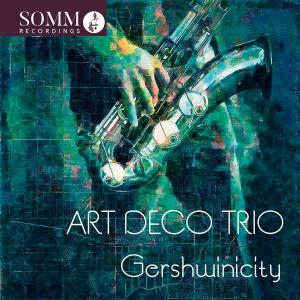 CD Review – Bomsori
CD Review – Bomsori
Violin On Stage
Bomsori Kim (violin)
NFM Wroclaw Philharmonic | Giancarlo Guerrero
DG 4860788 [72:56]
To those who have already come across her, Bomsori Kim is recognized as one of today's most dynamic and exciting violinists. She won prizes at ten international violin competitions during the 2010s, and is a superstar in her homeland of South Korea. She was given her distinctive first name by her grandfather – it translates literally as 'sound of spring', although she was actually born in December 1989.
Magical Memories for Trumpet and Organ
Lawo Classics LWC1216 [67:50]
'This is the third album by a trio of female trumpet players – Alison Balsom and Lucienne Renaudin Vary being the others – I have had the pleasure of reviewing here. Tine Thing Helseth (born 1987) is a Norwegian soloist, who has been the recipient of critical praise across six continents and numerous awards for her musical work.
 Philharmonic Concert Orchestra / Iain Sutherland
Philharmonic Concert Orchestra / Iain Sutherland
SOMM ARIADNE 5012 [78’25”]
My review of the last album by these artistes* finished with "… let us hope that Iain might have some more similar tapes in his archive", and here we are: 19 tracks recorded in Munich (June 1988) and Hanover (December 1992). Few conductors are as accomplished as the veteran Scot in the lighter orchestral music on this release.
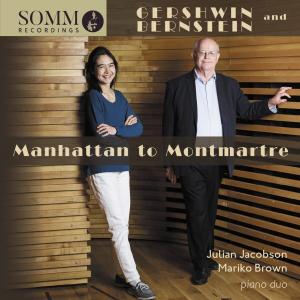 Paul Lewis / Steven Osborne
Paul Lewis / Steven Osborne
Hyperion CDA68329 [68’28]
This is a critically acclaimed album of five impeccably played pieces by a pair of princes of the piano. They are long-playing duo partners: Paul Lewis (born 1972) is from Liverpool and a recipient of a CBE for services to music, and Steven Osborne (born 1971) is Scottish and a celebrated performer of Gallic music with 29 Hyperion releases in 21 years to his credit.
By Robert Walton
It may seem obvious but the best test for a voice, first and foremost, is the sound it produces. Nothing else. If you love the resonance a vocalist can produce, a load of gobbledygook will tell you more about the artist than all the phrasing and lyrics a wordsmith can conjure up.
Sarah Vaughan
By Robert Walton
It may seem obvious but the best test for a voice, first and foremost, is the sound it produces. Nothing else. If you love the resonance a vocalist can produce, a load of gobbledygook will tell you more about the artist than all the phrasing and lyrics a wordsmith can conjure up.
In the case of Sarah Vaughan just imagine a thorough free range wallow on the instrument she was born with (Newark, New Jersey 1924) and you have the nearest thing to an opera singer in jazz. To an outsider her basic style, like Frank Sinatra’s, might be misinterpreted as overdoing the sentimental bit, like suffering. The older generation totally rejected that 1940s tendency of sounding miserable. This might have been slight exaggeration but there’s an element of truth in it. Of course “anything goes” is the byword when studying a voice of Vaughan’s calibre. The possibilities are endless. Scales, arpeggios, ducking and diving, improvising, in fact everything. And Vaughan who was more than capable of exercising the vocal chords just like a trapeze artist took risks, never missing a trick.
And talking of her own personal technology like Italian singers and the general public of that country, she ends words, especially the high long ones, with a clear cut-off point echoing the sheer power generated just to get the note airborne. She may have been a mistress of jazz but she sang some of the old fashioned ballads like a trooper. Because, one of my Lanza favourites, is given a fabulous treatment and has the listener guessing, will she go for the final high note? She does and it comes off magnificently. And keeping us aware of Climate Change, Oscar Rasbach’s ballad Trees showing off her contralto ability is the best female version I know. I only wish she had tried some Puccini. On the other hand she could swing like mad and her pitch was absolutely perfect. Wrap your Troubles in Dreams is an excellent example of relaxed swing with a Dave Pell-like small group. A good up-tempo standard with a conventional big band is This Can’t be Love. She really was the complete all rounder. I don’t think even the great Jo Stafford had the richness and control.
And while we’re on the subject of Stafford, her duets with Gordon MacRae are legendary and noted for their soft-hued matching. Sarah Vaughan’s partner was Billy Eckstine who again blended perfectly with her.
When she was 7, Sarah Lois began having piano and organ lessons useful for the local church, but she soon realized singing was her major passion. Her big break came in a 1942 amateur talent contest at the Apollo Theatre with the prize of a week’s employment on the bill with none other than Ella Fitzgerald. For a jazz singer this was the ultimate dream. Earl Hines saw her, hired her and suddenly she was singing with Charlie Parker, Eckstine and Dizzy Gillespie which brought her to bebop.
In her heyday she regularly topped all the jazz charts like Downbeat Magazine and was generally considered the best in her field. Consequently she was imitated by many other vocalists, but very few equaled her. Just to hear that unique vibrato was one of life’s musical treats.
So far in this article, Vaughan’s tracks have been taken from an EMI Music for Pleasure album titled “20 Jazz Classics” MFP 6160. But there is still one aspect of her singing we haven’t yet tackled......sensitivity. There really is only one album in her repertoire, which concentrates on that aspect. That’s the 12 track LP she made with Robert Farnon and the Svend Saaby Danish Choir in Copenhagen in 1963, “Vaughan with Voices”. (Mercury 20014 MCL) The way she warmed to Farnon’s beautiful arrangements is now history. One of them happened to be the arranger’s own composition How Beautiful is Night. Vaughan, Farnon and the Choir merged in a perfect threesome giving the tune a definitive outing never again achieved on disc.
So effectively two famous ladies were in town at the same time. The first, the permanent fixture of “The Little Mermaid” bronze statue displayed nearby on a rock by the Copenhagen waterside, and a visiting giant of jazz, coloratura soprano Sarah Vaughan.
Proving yet again Sarah Vaughan could easily switch from one genre to another, her finest recording was the unlikely light orchestral composition Serenata by Leroy Anderson. In the key of F, listen to the lovely chord of Fmaj 9 sung each time on the word “stand”. Only “The Divine One” could capture it quite so dramatically. Crossover artist extraordinaire!

